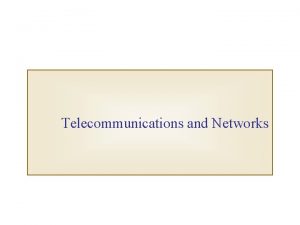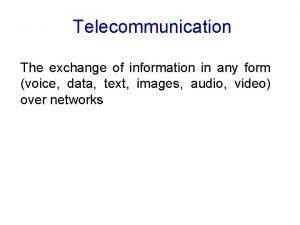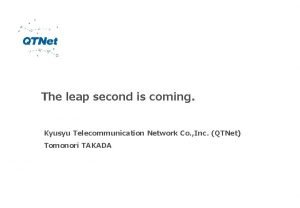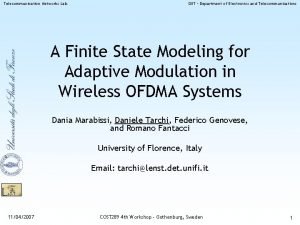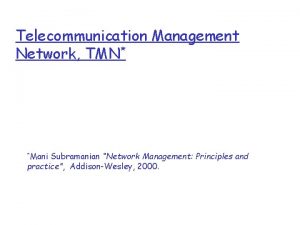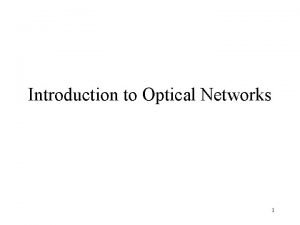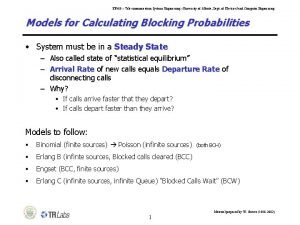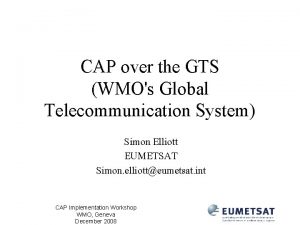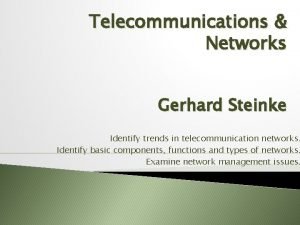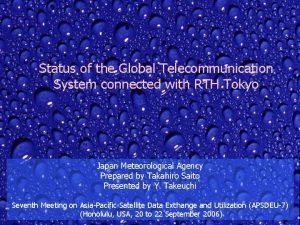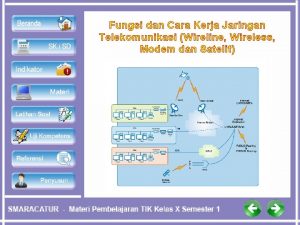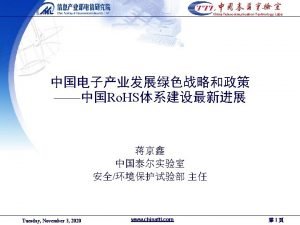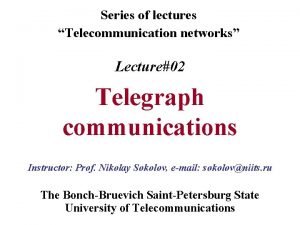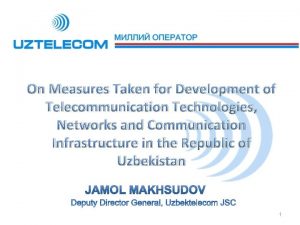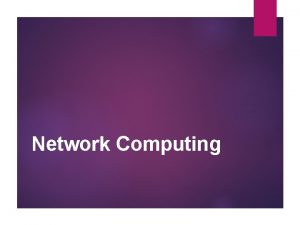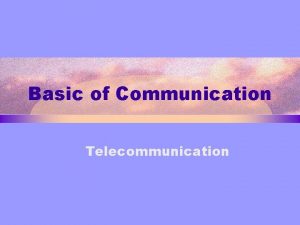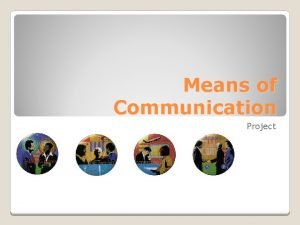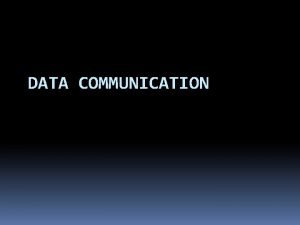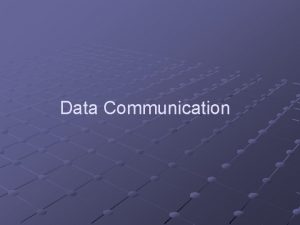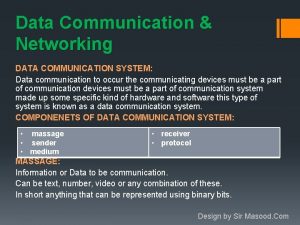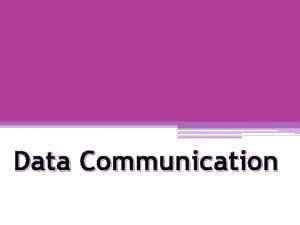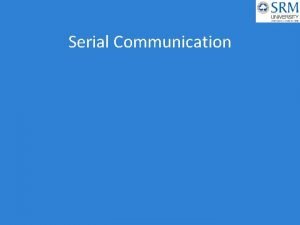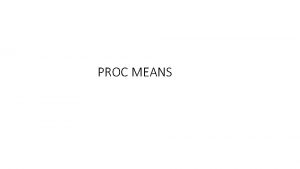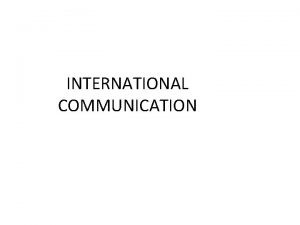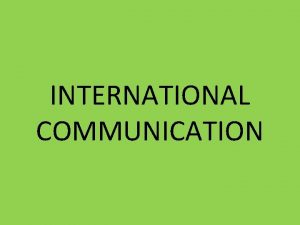Data Communications The term telecommunication means communication at


















- Slides: 18

Data Communications The term telecommunication means communication at a distance. The word data refers to information presented in whatever form is agreed upon by the parties creating and using the data. Data communications are the exchange of data between two devices via some form of transmission medium such as a wire cable. 1. 1

Five Components of Data Communication 1. 2

Five Components of Data Communication Message: ◦ text, number, images, audio, and video Sender and Receiver ◦ devices that send/receive data message ◦ Computer, workstation, telephone, TV, etc. Transmission medium ◦ Physical path thru which the message travels Protocol ◦ Set of rules governing data 1. 3

Data flow (simplex, half-duplex, and full-duplex) 1. 4

NETWORKS A network is a set of devices (often referred to as nodes) connected by communication links. A node can be a computer, printer, or any other device capable of sending and/or receiving data generated by other nodes on the network. 1. 5

Network Criteria Performance ◦ Mostly measured by throughput and delay Reliability ◦ The frequency of failure ◦ Recovery time from a failure Security ◦ Protecting data from unauthorized access Damage 1. 6

Type of Connection Point-to-Point Multipoint (multi-drop) 1. 7

Physical Topology Mesh topology Star topology Bus topology Ring topology Hybrid topology 1. 8

Mesh Topology Advantage v. Disadvantage Connection of telephone regional offices 1. 9

Star Topology Advantage v. Disadvantage High speed LAN 1. 10

Bus Topology Advantage v. Disadvantage Early Ethernet 1. 11

Ring Topology Advantage v. Disadvantage IEEE 802. 5 Token Ring, MAN 1. 12

Hybrid Topology Combination of two or more network topology 1. 13

Categories of Networks Local Area Network (LAN) Wide Area Network (WAN) Metropolitan Area Network (MAN) Personal Area Network (PAN) 1. 14

WANs: a switched WAN v. a point-to-point WAN 1. 15

Heterogeneous Network 1. 16

The Internet has revolutionized many aspects of our daily lives. It has affected the way we do business as well as the way we spend our leisure time. The Internet is a communication system that has brought a wealth of information to our fingertips and organized it for our use. 1. 17

PROTOCOLS AND STANDARDS Protocols ◦ A set of rules to define What is communicated How it is communicated When it is communicated Standards ◦ To guarantee national/international interoperatibility of data and telecommunication technology ◦ Regardless of equipment manufacturers ◦ ISO, ITU, ANSI, IEEE, … ◦ Internet standards are maintained by IETF for publishing RFC (Request for Comments) http: //www. ietf. org/rfc. html 1. 18
 Difference between telecommunication and data communication
Difference between telecommunication and data communication Telecommunications project management
Telecommunications project management Objectives of telecommunication
Objectives of telecommunication Types of telecommunication networks
Types of telecommunication networks Introduction of telecommunication
Introduction of telecommunication Kyushu telecommunication network co.,inc.
Kyushu telecommunication network co.,inc. Telecommunication
Telecommunication Telecommunication management network
Telecommunication management network The swift society
The swift society Telecommunications network architecture
Telecommunications network architecture Telecommunication
Telecommunication Global telecommunication system
Global telecommunication system Gerhard steinke
Gerhard steinke Global telecommunication system
Global telecommunication system Itu world telecommunication indicators database
Itu world telecommunication indicators database Jaringan wireline adalah
Jaringan wireline adalah China telecommunication technology labs
China telecommunication technology labs Telecommunication
Telecommunication Telecommunication sealing technology
Telecommunication sealing technology


